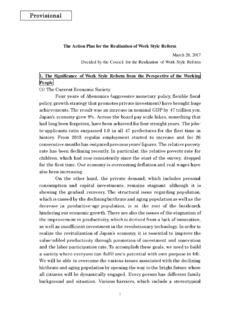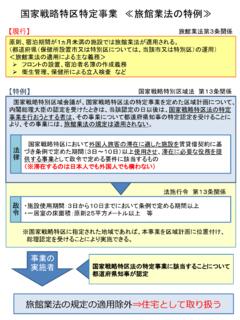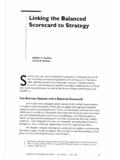Transcription of 1. The Basic Concept of the Growth Strategy
1 Provisional - 1 - I. Overview 1. The Basic Concept of the Growth Strategy Japan s economic stagnation of more than two decades has continued for far too long, and has had grave consequences on the Japanese economy and society. The prolongation of deflation, coupled with the advent of a society with a declining birthrate and aging population that are resulting in a decreasing workforce, companies were forced to rein in capital investments and wages, and even hold off on R&D investments.
2 Meanwhile, amid concerns about the future and cuts in incomes, consumers too have had to reduce consumption. All of this has made Japan unable to pull itself out of the vicious cycle of stagnating demand and accelerating deflation. This period of long-term economic slowdown has been dubbed the lost two decades. Far graver than the economic losses, however, were the losses of confidence and future hopes among company managers as well as individuals. Without confidence, companies cannot take risks in new Growth sectors; human resources have limited opportunities to leverage their capabilities; technologies and ideas are left neglected; and individuals financial assets and companies internal reserves are underutilized.
3 This naturally leaves human talents, goods, and funds structurally idle. In less than six months since its inauguration, the Abe administration has launched the first prong or arrow (of the administration s three prongs of economic revival) of bold monetary policy aimed at dispelling the deflation mindset. It has also launched the second arrow of flexible fiscal policy aimed at igniting the dampened economy. Furthermore, the Abe administration has decided on, and set into action, processes which were deemed necessary but had been placed on the wayside, including participation in the Trans-Pacific Partnership (TPP) negotiations, the Electricity System Reform, and elimination of childcare waiting lists.
4 The consequent pick-up in consumption and corporate performance has brightened Japan s economic outlook for the Japanese people and international communities. In this context, the Growth Strategy s role as the third arrow is clear. It should restore the confidence of company managers and of all people, and change expectations into actions. Currently, Japan finds itself in the position of a developed country, facing many serious challenges that it must address head on, challenges which other countries will one day also be facing.
5 These challenges include the declining birthrate, aging population, and resource and energy issues. If Japan can become a world pioneer in resolving these challenges, an Provisional - 2 - opportunity presents itself for Japan to become a global leader in new Growth sectors. Japan will once again implement aggressive economic policies that inspire motivation to tackle difficult challenges ( challenge ), carve out new Growth sectors ( innovation ), both domestically and internationally ( open ), and mobilize, in one stroke, human talents, goods, and funds which had fallen idle ( action ).
6 If, as the stagnant economy starts to move again, Japan is able to promote replacement of old facilities and equipment with new ones, as well as to accelerate both investment in Growth sectors and in labor mobility, then corporate earnings will increase, which will deliver returns for the people in the form of higher worker salaries and increased employment. This will lead to the realization of a virtuous cycle, where consumption will increase, triggering new investment, creating spillovers for communities and small and medium-sized enterprises (SMEs).
7 This Growth Strategy will mark a fresh start. By having all economic actors in the private sector actively and dynamically undertake full-fledged efforts to promote Growth with a determination to take on challenges, a virtuous cycle will be set into motion for the first time, elevating the Japanese economy from stagnation to revival and to even greater heights, and in turn, enabling the economy to be placed on a Growth trajectory. Through the implementation of the three arrows, including this Growth Strategy , among other measures, Japan aims to achieve a vibrant economy that will register over 2% labor productivity improvement in the medium- to long-term, and around 3% nominal gross domestic product (GDP) Growth and around 2% real GDP Growth , on average, over the next ten years.
8 By the late 2010s, the goal will be to achieve even higher Growth . Based on these measures, it is expected that nominal gross national income (GNI) per capita will grow by more than 3 percent in the medium- to long-term, resulting in an increase of more than million yen in 10 years. To ensure that economic Growth takes place, in addition to establishing macro targets, this Growth Strategy sets forth targets (Key Performance Indicators [KPIs]) that should be achieved for each set of policies.
9 A policy package has been laid out, including regulatory reform, budget, and taxation system measures, which may be implemented now to achieve the targets. However, these measures will not be all. This Strategy is a constantly evolving Growth Strategy which will continuously add on and examine measures for the achievement of the targets. 2. Roadmap to Growth Provisional - 3 - (1) Unleashing the power of the private sector to the fullest extent The private sector holds the key to strengthening the competitiveness of industries.
10 To ensure that the expectations for the exit from deflation created by the first arrow and second arrow do not end up being temporary, the vast quantities of funds which lie idle in companies must be directed towards investments that generate future values. To this end, it goes without saying that the Government must do more than ever before to improve the competition environment for Japanese companies, including the development of a stable macroeconomic environment, overcoming delays in establishment of economic partnerships with other countries, the realization of low cost energy supplies, and the review of regulations and institutions which inhibit investment.


















